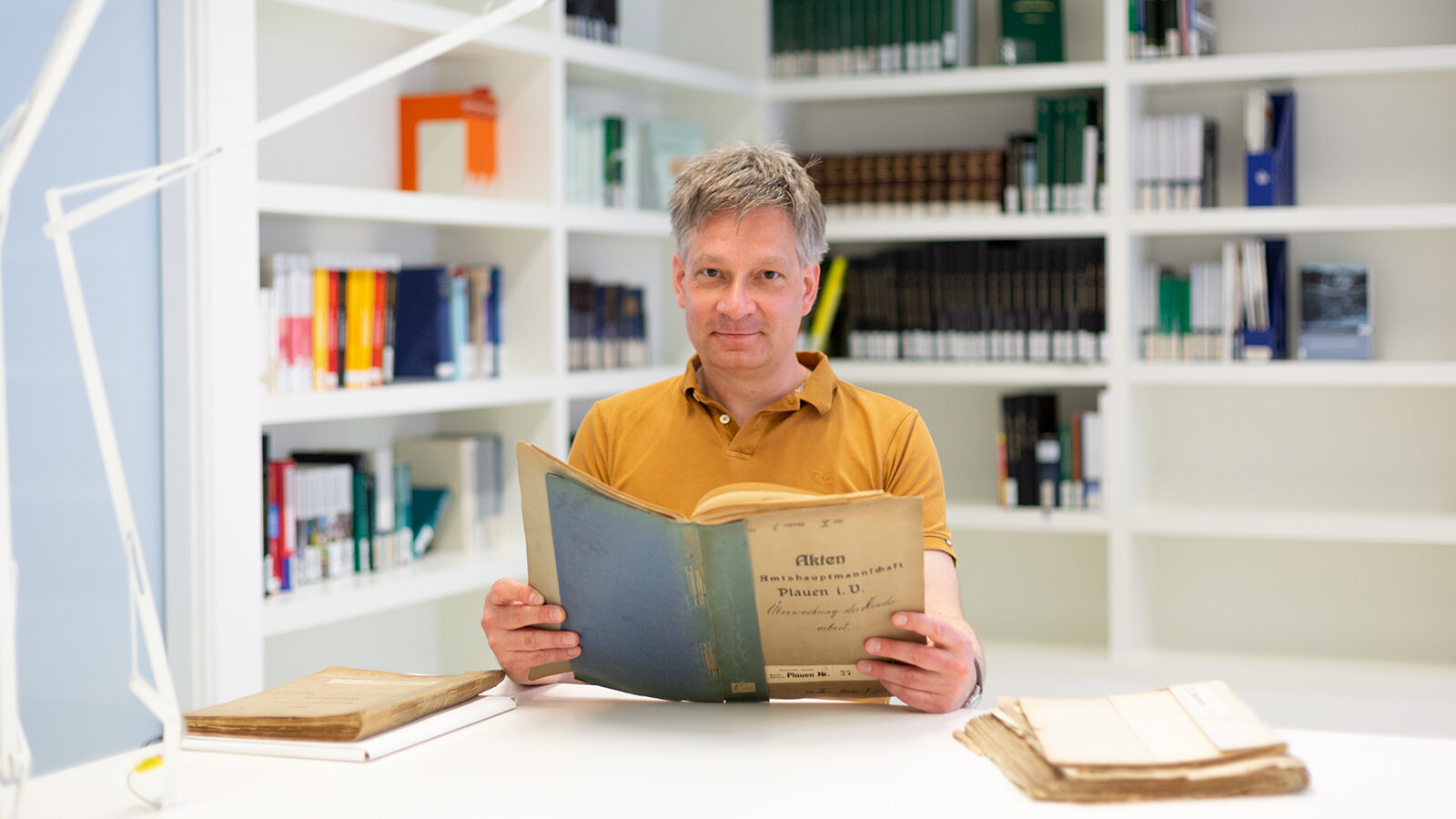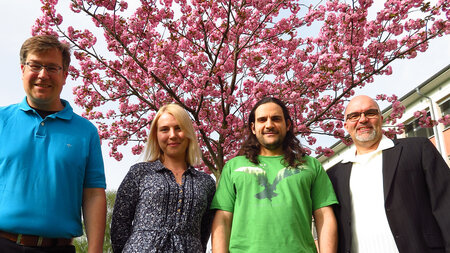In Focus: Child Labor in the Saxon Textile Industry
At the Institute for European Studies and History at Chemnitz University of Technology, the first systematic study of child labor in this industry over the period from 1800 to 1938 is being launched.
-

Dr. Manuel Schramm is also researching files at the Saxon State Archives in Chemnitz. Photo: Lili Hofmann
Today, more than 200 million children around the world work - often under catastrophic conditions in factories, on construction sites, and in agriculture, among other places. On June 12, the World Day Against Child Labor brings this issue back into the public eye. What is less well known are the historical references to child labor - including in Saxony, where children were exploited in many places, for example in cotton mills and cottage industries, especially in the 19th century. A research project on "Child Labor in the Saxon Textile Industry, 1800-1938" is now starting at the Junior Professorship of Antiquity and Europe with Special Emphasis on the Reception of Antiquity at Chemnitz University of Technology, which will be funded with approximately 155,000 euros by the German Research Foundation over the next three years.
The extent and nature of child labor in the Saxon textile industry from the 19th century until the enactment of the Youth Protection Act of 1938 will be investigated. In doing so, the study will rely, among other things, on an extensive tradition of files in the Saxon State Archives, which has not yet been systematically evaluated, which will make it possible to include not only factory work by children but also home-based work in the textile trade, which was often closely intertwined with industry, to a greater extent. "Child labor was widespread for a long time in the textile industry in Saxony, one of the pioneering regions of industrialization on the European continent," says project leader Dr. Manuel Schramm, adding, "Most research on child labor in this region goes up to World War I. We are now taking a long-term perspective and also exploring child labor in Germany in the first half of the 20th century, which means the study is breaking almost completely new ground." Looking at a longer period, he said, makes it possible to answer important questions such as whether child labor has declined or changed form, or, in the case of factory work by children, what caused the decline. "In addition, focusing on one industry allows us to investigate how technical developments and changes in the organization of factories affected child labor in quantitative and qualitative terms," Schramm said. It would also be exciting to investigate why child labor was apparently more widespread in Saxony than in other German states such as Prussia.
For more information, contact Dr. Manuel Schramm, Institute for European Studies and History, e-mail: manuel.schramm@phil.tu-chemnitz.de.
(Author: Mario Steinebach / Translation: Chelsea Burris)
Matthias Fejes
07.06.2021





